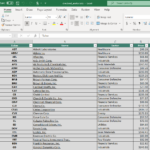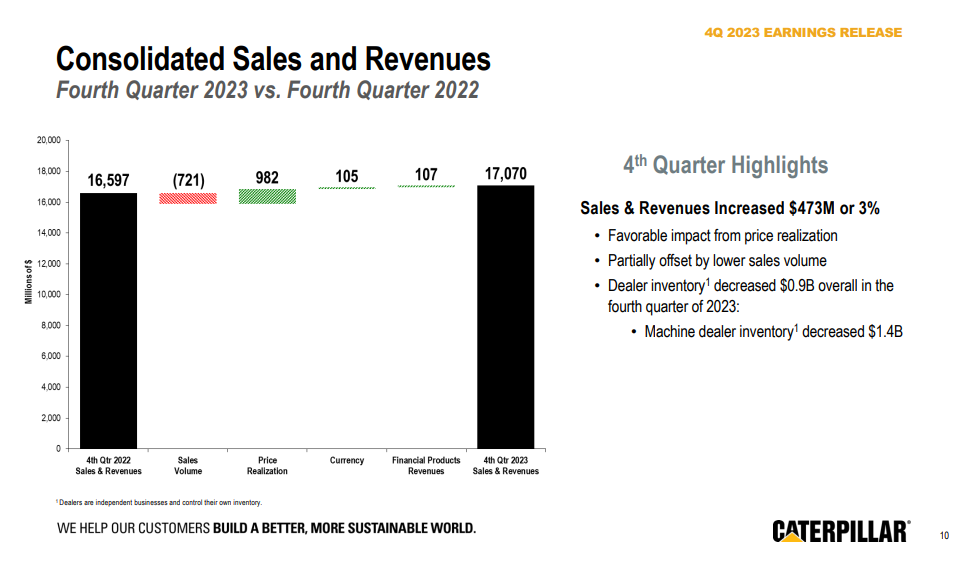Updated on January 27th, 2024
Each year, we individually review each of the Dividend Aristocrats, a group of 68 stocks in the S&P 500 Index that has raised their dividends for at least 25 consecutive years.
To make it on the list of Dividend Aristocrats, a company must possess a profitable business model with a valuable brand, global competitive advantages, and the ability to withstand recessions. This is why Dividend Aristocrats can continue raising dividends in difficult years.
With this in mind, we have created a list of all 68 Dividend Aristocrats.
You can download your free copy of the Dividend Aristocrats list, along with important financial metrics such as price-to-earnings ratios and dividend yields, by clicking on the link below:
Disclaimer: Sure Dividend is not affiliated with S&P Global in any way. S&P Global owns and maintains The Dividend Aristocrats Index. The information in this article and downloadable spreadsheet is based on Sure Dividend’s own review, summary, and analysis of the S&P 500 Dividend Aristocrats ETF (NOBL) and other sources, and is meant to help individual investors better understand this ETF and the index upon which it is based. None of the information in this article or spreadsheet is official data from S&P Global. Consult S&P Global for official information.
Caterpillar Inc. (CAT) joined the Dividend Aristocrats list in 2019. Even more impressive is the fact that Caterpillar operates in a highly cyclical industry, which normally prevents companies from attaining long histories of annual dividend increases.
However, Caterpillar’s management team has proven its commitment to returning cash to shareholders even through the inevitable ebbs and flows of the business over the years. Caterpillar also has durable competitive advantages that allow it to raise its dividend each year, even through downturns in the global economy.
Business Overview
Caterpillar was founded in 1925 and today competes in the manufacturing and selling of construction and mining equipment. The company also manufactures ancillary industrial products such as diesel engines and gas turbines. Caterpillar stock has a market capitalization of ~$160 billion, making it one of the largest industrial stocks in the world.
Industrial manufacturers benefited from strong demand in 2022 and 2021, which fueled growth and spurred global economic activity off the low base established in 2020 amid the pandemic.
On February 5th, 2024, Caterpillar reported its Q4 and full-year results for the period ending December 31st, 2023. For the quarter, the company generated revenues of $17.1 billion, a 3% increase compared to the $16.6 billion posted in the fourth quarter of 2022.
Source: Investor Presentation
The Construction Industries and Resource Industries segments posted a decline of 15% and 6% in revenues, respectively. However, these declines were more than offset by 12% higher revenues in the Energy & Transportation segment.
Caterpillar’s adjusted operating profit margin was 18.9%, compared to 17.0% last year. Margin expansion combined with revenue growth resulted in adjusted earnings-per-share landing at $5.23 against $3.86 in the comparable period last year. For the year, adjusted earnings-per-share surged 53% to $21.21. For FY2024, we expect adjusted EPS of $21.30.
Growth Prospects
Caterpillar is closely tied to global economic growth and commodity prices. Its customers extract resources from the earth and build and construct a wide variety of structures, so economic growth is key to funding that development.
This leads to some fairly extreme cyclicality in Caterpillar’s results, which then sees the stock swing wildly between extremes of the sentiment scale.
The coronavirus pandemic weighed heavily on the company, but the global economic recovery that ensued enabled Caterpillar to become highly profitable in 2021 and 2022. Caterpillar is offsetting increased manufacturing costs with increased pricing. Caterpillar generated record results in 2023.
While results may continue to be volatile, it appears the company is back on track. In fact, the $1.2 trillion bipartisan infrastructure bill should to sustain strong demand for Caterpillar’s machinery.
We are forecasting $21.30 in earnings-per-share for 2024 to go along with a 3% growth rate over the next five years.
This reflects both some caution with regard to the cyclical nature of the business and Caterpillar’s ability to bounce back when demand returns.
Competitive Advantages & Recession Performance
Competitive advantages in industrial applications can be challenging, given that some competitors make similar products for most applications.
However, over the years, Caterpillar has built itself into one of the largest players in lucrative end markets such as construction, energy, and mining.
Its global presence affords it some diversification of revenue by segment and industry, but also geographically, which has served it well in recent years. Its scale also gives it the ability to leverage down variable costs per unit, which boosts margins.
However, Caterpillar is certainly not immune from recessions, as slowdowns in the global economy are generally accompanied by lower commodity prices and slowing construction spending.
These factors took a major toll on Caterpillar’s bottom line during the Great Recession, as its earnings were devastated, if only briefly.
Caterpillar’s earnings-per-share during the Great Recession are below:
- 2007 earnings-per-share of $5.32
- 2008 earnings-per-share of $5.71 (7% increase)
- 2009 earnings-per-share of $1.43 (75% decline)
- 2010 earnings-per-share of $4.15 (190% increase)
While Caterpillar certainly felt the pain from the Great Recession, its earnings rebounded fairly quickly and reclaimed its pre-recession earnings-per-share number in 2011.
Caterpillar also experienced a large decline in earnings-per-share in 2020 due to the coronavirus pandemic but recovered strongly since then in a short period of time.
Therefore, it is clear that Caterpillar is exposed to recessions due to the economic bellwether nature of the heavy machinery industry. But it also has a history of recovering from downturns fairly quickly.
Valuation & Expected Returns
Caterpillar’s current price-to-earnings ratio is 15.2, based on the 2024 expected EPS of $21.30. This is an elevated valuation level for Caterpillar. Since 2013, shares of Caterpillar have traded with an average P/E ratio of about 17. We believe 15 is a reasonable, fair value estimate for Caterpillar, given its cyclical business and vulnerability to recessions and the current rising rate environment.
Periods of cyclicality are normal for Caterpillar when it comes to valuation. Still, the stock appears to be just slightly overvalued. A declining P/E multiple could reduce future returns; if the P/E multiple declines from 15.2 to 15.0 over the next five years, it would lower annual returns by 0.3% per year in that time frame.
The other negative aspect of stocks with elevated valuations is that they also have lower dividend yields. As Caterpillar’s share price has risen in the past year, its dividend yield has declined to 1.6%. Dividends and earnings-per-share growth (expected at 3% per year) will add to shareholder returns, but the overvaluation of the stock is a hurdle to clear.
Based upon the factors discussed above, we see total returns of 4.3% per year. This leads us to rate Caterpillar a hold today.
Final Thoughts
Caterpillar stock continues its impressive rise, having increased over 35% in the past one year compared to a 27% rise in the S&P 500 index. Results in 2024 are expected to be strong, just as in 2023 when revenue and earnings-per-share surged significantly due to strong demand and increasing commodity prices. While the stock is trading above its average PE and our fair value estimate, it is not severely overvalued.
Caterpillar has an industry-leading brand and a positive long-term growth outlook, but we feel the stock has simply become overpriced due to the rally since the pandemic lows. With a mid-single digit expected future return, we rate the stock a hold. Investors may be better off wait for a decline in the share price.
Further reading: See analysis on our favorite agriculture stocks.
Additionally, the following Sure Dividend databases contain the most reliable dividend growers in our investment universe:
- The Dividend Contenders List: 10-24 consecutive years of dividend increases.
- The Dividend Challengers List: 5-9 consecutive years of dividend increases.
- The Dividend Champions: Dividend stocks with 25+ years of dividend increases, including those that may not qualify as Dividend Aristocrats.
- The Dividend Achievers: dividend stocks with 10+ years of consecutive dividend increases.
- The Dividend Kings: considered to be the ultimate dividend growth stocks, the Dividend Kings list is comprised of stocks with 50+ years of consecutive dividend increases
If you’re looking for stocks with unique dividend characteristics, consider the following Sure Dividend databases:
- The Complete List of Monthly Dividend Stocks: stocks that pay dividends each month, for 12 payments over the year.
- The Blue Chip Stocks List: this database contains stocks that qualify as either Dividend Achievers, Dividend Aristocrats, or Dividend Kings.

